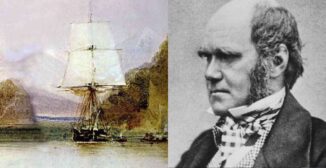Happy 52nd birthday to Big Duncan Ferguson, the Scottish striker who racked up over 200 appearances for Everton FC scoring 58 goals. Whether you loved him or found him a disorderly menace, there’s no question that his hyper-aggressive manner of patrolling the space between the opposing center halves was at times extremely effective, or at least fit in perfectly with the brutish side of English football. Beloved by the blue half of Merseyside, he maintains a Premier League record for most red cards. READ more about Big Dunc… (1971)

In October 1994, Everton were struggling under the management of Mike Walker and looking for options to reinvigorate their faltering season. Signed on a loan that was eventually made permanent, Ferguson played a key role in saving Everton from relegation, and also helping them win the 1994–95 FA Cup.
His career was not an overly successful one, and at one point attracted criticism for his high salary and transfer fee in comparison to his injury record, frequent dismissals, and low goal return. But bottom-half teams in the Premier League need more than just a goal return from their forwards.
Frequently outpassed by teams higher up the table, smaller clubs need goalscorers who can impose a physical presence on the game, hold the ball up to allow other players to join in, and work their socks off in defensive situations, and for these reasons, if not for goals, Ferguson was on the opening day squad list for seven seasons at Everton across 2 stints.
He has taken over as caretaker manager on two occasions for Everton, the first coming in December of 2019, when in his first game he coached the Blues to a 3-1 win against Chelsea. When his striker Richarlison scored the team’s first goal, Ferguson ran down the touchline jumping up and down until he reached one of the ballboys, whom he picked up, hugged, and swung around through the air.
MORE Good News on this Date:
- The Great Poland Uprising against German rule began (1918)
- Radio City Music Hall in NY City opened (1932)
- The Dutch queen granted sovereignty to Indonesia after 300 years of rule (1949)
- Spain became a democracy following 40 years of military dictatorship when King Juan Carlos I ushered in a new constitution that established a social and democratic state that advocates as its highest values liberty, justice, equality and political pluralism (1978)
- The United States normalized trade relations with China (2001)
- Indonesia’s Aceh rebels formally abolished their 30-year armed struggle for independence under a peace deal born out of the 2004 tsunami (2005)
- After decades of repression under military rule, residents in Myanmar’s largest city, Yangon, got to vote, electing their city councils for the first time in 60 years (2014)
57 years ago today, the Western world became aware of the Sótano de las Golondrinas, or the Cave of Swallows, when locals showed T. R. Evans, Charles Borland and Randy Sterns the mammoth cave. Known by the Huastec people from the area located in the modern state of Lan Luis Potosi since ancient times, the descent to the bottom is 1,214 ft, or 370 meters, making it the deepest cave shaft in the world.

It has become a popular destination for extreme adrenaline sports like BASE Jumping. The Cave of Swallows is the 11th largest sheer drop in the world, with a freely falling person taking 10 seconds to reach the bottom. Repelling down can take an hour. WATCH a base jumper take the 10-second freefall… (1966)
192 years ago today, the naturalist and biologist Charles Darwin left Britain for the Pacific Ocean at age 22 where, for five years, he would travel around the world, gathering the data that would form his groundbreaking theories on evolution, which were published 28 years later in a book, entitled On the Origin of Species.

Aboard the HMS Beagle, Darwin suffered badly from seasickness, but he spent most of his time on land investigating geology and gathering natural history collections. He had some expertise in geology, beetle collecting, and dissecting marine invertebrates, but in all other areas was a novice, yet ably collected specimens for expert appraisal.
Darwin wrote copious notes while on board the ship, often about marine invertebrates, including plankton. While moving down the coast of South America, Darwin made a major find of fossil bones of huge extinct mammals beside modern seashells, indicating recent extinction with no signs of change in climate or catastrophe. In the Galápagos Islands, Darwin looked for evidence attaching wildlife to an older “centre of creation” and his observations about mockingbirds, finches, and tortoises would fuel his thoughts on the “origin of species.” WATCH a video… (1831)
READ more about his fascinating voyage, or watch more videos on YouTube, here.
Also, on this date, the Hagia Sophia was completed in 537.

The Eastern Orthodox Church of Holy Wisdom is considered one of the great Byzantine buildings. It was converted to a mosque in 1453 by the Turks, and in 1935 to a museum.
And, 54 years ago today, Diana Ross and The Supremes went to No.1 on the US singles chart for the 12th and final time with Someday We’ll Be Together. The female singing group was the most commercially successful of any act at Motown Records and are, to date, America’s most successful vocal group.

Diana Ross, along with Florence Ballard and Mary Wilson were all from a public housing project in Detroit. With their 33 Billboard Top 40 singles, the Supremes reached their peak in the mid-1960s, and rivaled the Beatles in worldwide popularity. Only four acts have topped the Billboard charts at No.1 more often than these harmonious African-American women. Their 12 hits were: Where Did Our Love Go; Baby Love; Come See About Me; Stop! In the Name of Love; Back in My Arms Again; I Hear a Symphony; You Can’t Hurry Love; You Keep Me Hangin’ On; Love Is Here and Now You’re Gone; The Happening; Love Child; and, Someday We’ll Be Together. (1969)
43 years ago today, Double Fantasy, the seventh and final studio album released by John Lennon during his lifetime, hit No.1 and stayed atop the US charts for 8 weeks. Its hit song Just Like Starting Over remained at No.1 for five weeks.
The album marked Lennon’s return to recording music full-time, following a five-year hiatus to raise his son with Yoko Ono.
Following Lennon’s death three weeks after its release, it became a worldwide success and went on to win a Grammy for Album of the Year, with several songs, like Woman, Watching the Wheels, and Beautiful Boy, garnering praise as some of his finest.

In 1975, Lennon put his career on hold, but then in the middle of 1980, he embarked on a sailing trip from Rhode Island to Bermuda. During the journey, his yacht encountered a severe prolonged storm. Most of the crew succumbed to seasickness except Lennon, who was forced to take the helm for many hours alone. Contemplating the fragility of life, his confidence was renewed and he began to write new songs, commenting later, “I was so centered after the experience at sea that I was tuned in to the cosmos – and all these songs came!” Lennon was also inspired to compose again by former bandmate Paul McCartney whose recent single, Coming Up, John admired. SEE the ‘Watchin’ the Wheels’ music video w/ scenes of John and his son, and learn more… (1980)
SHARE the Milestones, Memories, and Music…




















